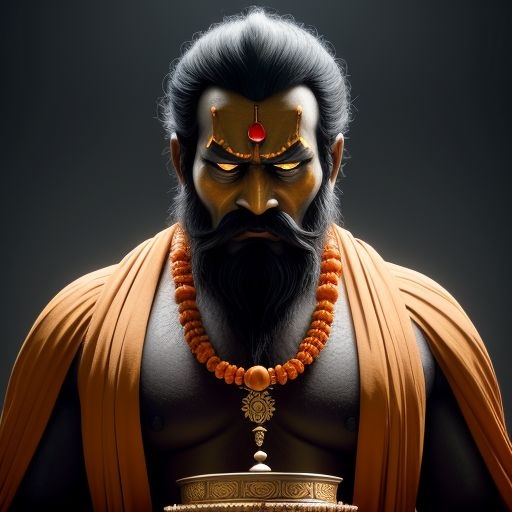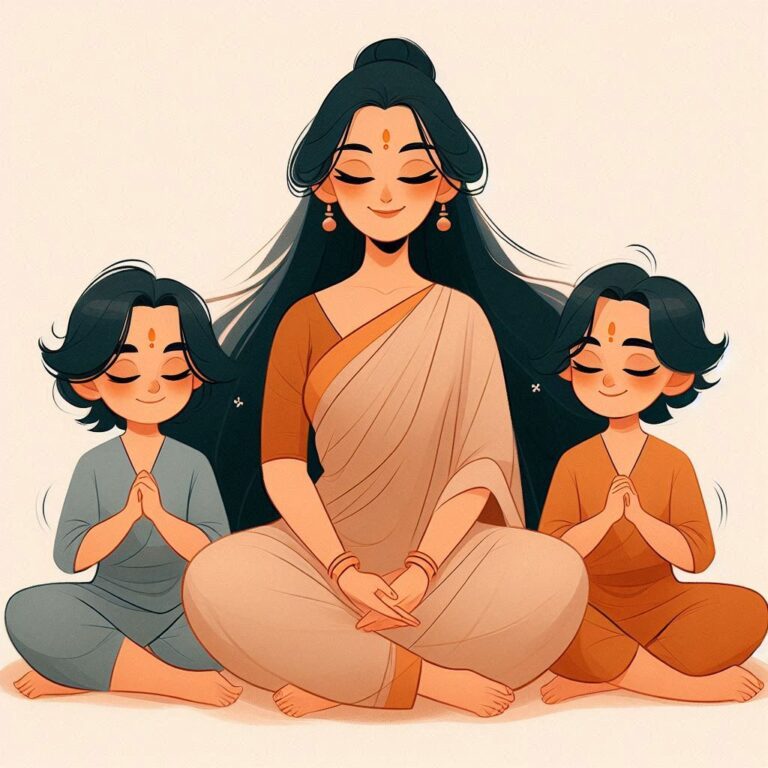Rama’s Early Years – Rama’s Childhood and Education
Lord Rama, the seventh avatar of Vishnu, is one of the most revered deities in Hindu mythology. His early years are significant, as they shaped his divine qualities of righteousness, valor, and compassion. Understanding the childhood of Rama provides insight into the making of a just and beloved ruler who upheld the principles of dharma throughout his life.
The Prophetic Birth of Lord Rama
Rama’s birth was no ordinary event. He was born as a divine answer to King Dasharatha’s prayers for an heir. After performing the Putra Kameshti Yajna under the guidance of Sage Rishyasringa, Dasharatha was blessed with four sons, with Rama being the eldest. The kingdom of Ayodhya rejoiced as the prophecy of Vishnu’s incarnation came to fruition.
Childhood in the Royal Palace
Rama grew up in the royal palace of Ayodhya, surrounded by luxury but rooted in humility. Raised by King Dasharatha and Queen Kaushalya, Rama was taught the importance of empathy, duty, and discipline from a young age. His natural inclination toward kindness and respect for everyone, regardless of status, endeared him to all.
Rama’s Bond with His Brothers
One of the most heartwarming aspects of Rama’s childhood was his close relationship with his brothers—Bharata, Lakshmana, and Shatrughna. Though all four brothers shared a strong bond, Rama and Lakshmana were inseparable. Lakshmana saw himself as Rama’s protector, accompanying him in all his endeavors.
श्लोकः
भ्रातॄणां प्रीतिः शाश्वती, यस्मिन्सौख्यं विधीयते।
स राजाधिराजो रामः, धर्मनिष्ठः सदा भवेत्॥
Phonetics:
Bhrātṝṇāṁ prītiḥ śāśvatī, yasminsaukhyam vidhīyate।
Sa rājādhi-rājo rāmaḥ, dharma-niṣṭhaḥ sadā bhavet॥
Translation:
“Eternal is the bond of love among the brothers, where happiness resides.
Rama, the king of kings, forever rooted in dharma.”
Education in the Gurukul
Despite being a prince, Rama, like every Kshatriya child, was sent to the Gurukul for his education. Along with his brothers, he learned under the wise Guru Vashistha. The Gurukul imparted a well-rounded education, teaching them not only warfare but also the sacred scriptures, governance, and moral duties.
The Teachings of Guru Vashistha
Guru Vashistha played a vital role in shaping Rama’s future. His teachings emphasized the importance of dharma (righteousness), karma (action), and the balance between worldly duties and spiritual growth. Vashistha’s lessons laid the foundation for Rama’s understanding of the complexities of life and governance.
श्लोकः
आचार्यस्य वचनेन धर्मं, सर्वलोकहितं चरेत्।
यस्य ज्ञानं यथार्थं स्यात्, तस्य स्यात् जीवनं सुखम्॥
Phonetics:
Ācāryasya vacanena dharmaṁ, sarva-loka-hitaṁ caret।
Yasya jñānaṁ yathārthaṁ syāt, tasya syāt jīvanaṁ sukham॥
Translation:
“By the teachings of the guru, one should walk the path of dharma for the welfare of all.
He whose knowledge is true, his life is filled with happiness.”
Rama’s Mastery in Archery

Even from a young age, Rama displayed exceptional skill in archery. Under the tutelage of Sage Vishwamitra, Rama honed his warrior abilities. His early mastery of archery was a sign of the divine warrior he was destined to become, as demonstrated when he lifted and strung the mighty bow of Shiva during Sita’s swayamvara.
Rama’s Love for His People
As a child, Rama was deeply compassionate. His love and respect for his subjects, regardless of their social standing, made him the people’s prince. His connection with the citizens of Ayodhya would later serve him well as a ruler who understood the heart of his people.
Childhood Tales of Dharma
Stories from Rama’s childhood reflect his inherent righteousness. One such story recounts how, as a young boy, he would always stand up for justice, even if it meant taking a difficult path. These tales not only reflect his moral courage but also foreshadow the immense responsibility he would shoulder as the upholder of dharma in later life.
Rama’s Relationship with Nature
The lush forests surrounding Ayodhya served as a playground for young Rama and his brothers. Here, Rama developed a deep love for nature. His time in the forest strengthened his bond with the natural world, which later played a key role during his exile.
श्लोकः
वनवासे यदा रामः, प्रकृतिं च पर्युपासते।
तस्य ह्रदयद्वारं सदा, प्रकृतिस्तु विवर्धते॥
Phonetics:
Vanavāse yadā rāmaḥ, prakṛtiṁ ca paryupāsate।
Tasya hṛdaya-dvāraṁ sadā, prakṛtistu vivardhate॥
Translation:
“In the forest, when Rama embraced nature,
The door to his heart forever opened to its beauty and bounty.”
Conclusion
The early years of Lord Rama were not just about royal luxuries but lessons in righteousness, humility, and love. These years prepared him to become the ideal king, husband, and warrior who would go on to uphold dharma, making him an eternal symbol of virtue and strength.
FAQs
- What was the significance of Rama’s childhood?
Rama’s childhood laid the foundation for his future role as a ruler, instilling virtues of compassion, righteousness, and strength. - How did Guru Vashistha influence Rama’s education?
Guru Vashistha taught Rama the balance between duty, spiritual growth, and governance, making him the embodiment of dharma. - What skills did Rama learn during his early years?
Rama mastered the Vedic scriptures, governance, warfare, especially archery, and developed a deep connection with nature. - How did Rama’s relationship with his brothers impact his life?
His strong bond with his brothers, especially Lakshmana, became a pillar of strength and loyalty throughout his life. - Why is Rama’s childhood considered divine?
Rama’s childhood is considered divine due to the blessings he received from sages and the gods, his extraordinary virtues, and his innate connection to dharma. His actions from a young age reflected the characteristics of a divine being, foreshadowing his destiny as Vishnu’s incarnation. His compassion, humility, and early mastery in archery are also seen as signs of his divine purpose, as he was born to rid the world of evil and establish righteousness.







